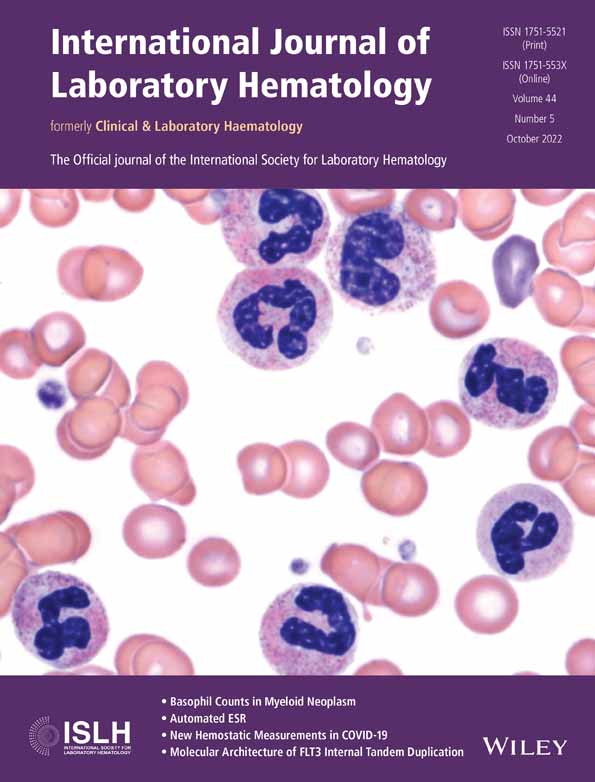Automated analysers underestimate atypical basophil count in myeloid neoplasms
Funding information: American Society of Hematology, Grant/Award Number: HONORS (Hematology Opportunities for the Next Gen)
Abstract
Introduction
Recent data suggest basophils can adopt an atypical appearance in myeloid disorders including myeloproliferative neoplasms (MPNs) and myeloproliferative/myelodysplastic disease. We hypothesized that automated analysers may not accurately quantitate basophils in myeloid neoplasms based on scatter properties. This study examined basophil counts and properties in myeloid disorders by automated cell analyser, manual differential, and flow cytometry.
Methods
Patients with myeloid neoplasms and control patients with no myeloid disorder diagnosis at a tertiary care centre were identified. Basophil percentage was compared for automated analyser counts (Sysmex XN9000), manual differential, and flow cytometry. Basophil scatter properties in MPNs were examined using flow cytometry.
Results
Thirty-one patients with myeloid neoplasms were included: 58% were male, mean age was 70.2 (±20.7) years, 32% had a diagnosis of chronic myeloid leukaemia with the remaining patients divided among various other forms of myeloid disease (including: essential thrombocythemia, polycythemia vera, unclassifiable MPN, myelodysplastic syndromes). For these patients, mean basophil percentage by automated analyser was significantly lower than manual differential (2.7 ± 2.9 vs. 7.1 ± 4.6, respectively, p < 0.001). No significant difference was found between automated versus manual differential for basophils in control subjects (p = 0.373). For myeloid neoplasm patients, mean basophil percentage was not significantly different between manual differential and flow cytometry (p = 0.116); mean basophil percentage by automated analyser was significantly lower than flow cytometry (2.7 ± 2.9 vs. 5.3 ± 3.7, respectively, p = 0.003).
Conclusion
Automated analysers underestimate basophil counts in patients with myeloid neoplasms. Manual differential and flow cytometry are recommended for more accurate quantitation and characterization of aberrant basophils.
CONFLICT OF INTEREST
The authors declare no conflicts of interest.
Open Research
DATA AVAILABILITY STATEMENT
The data that support the findings of this study are available from the corresponding author upon reasonable request.




